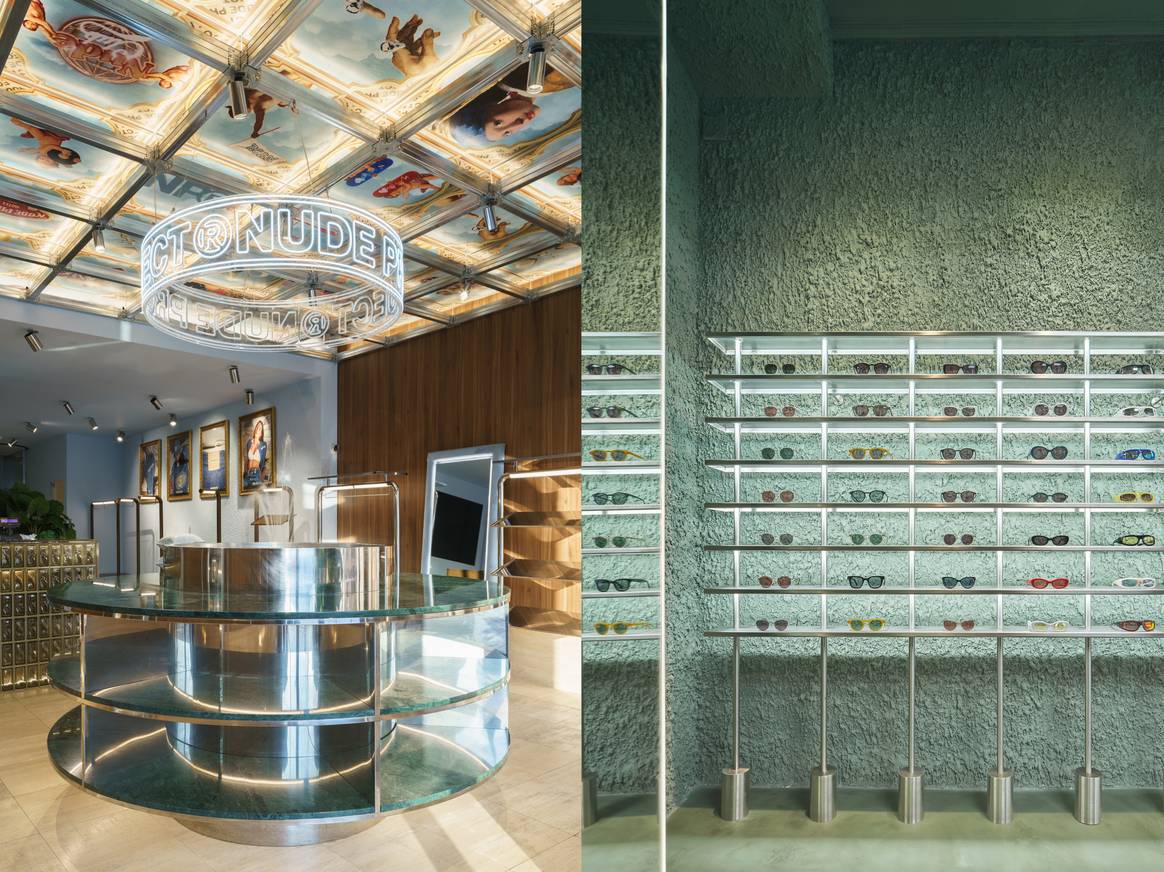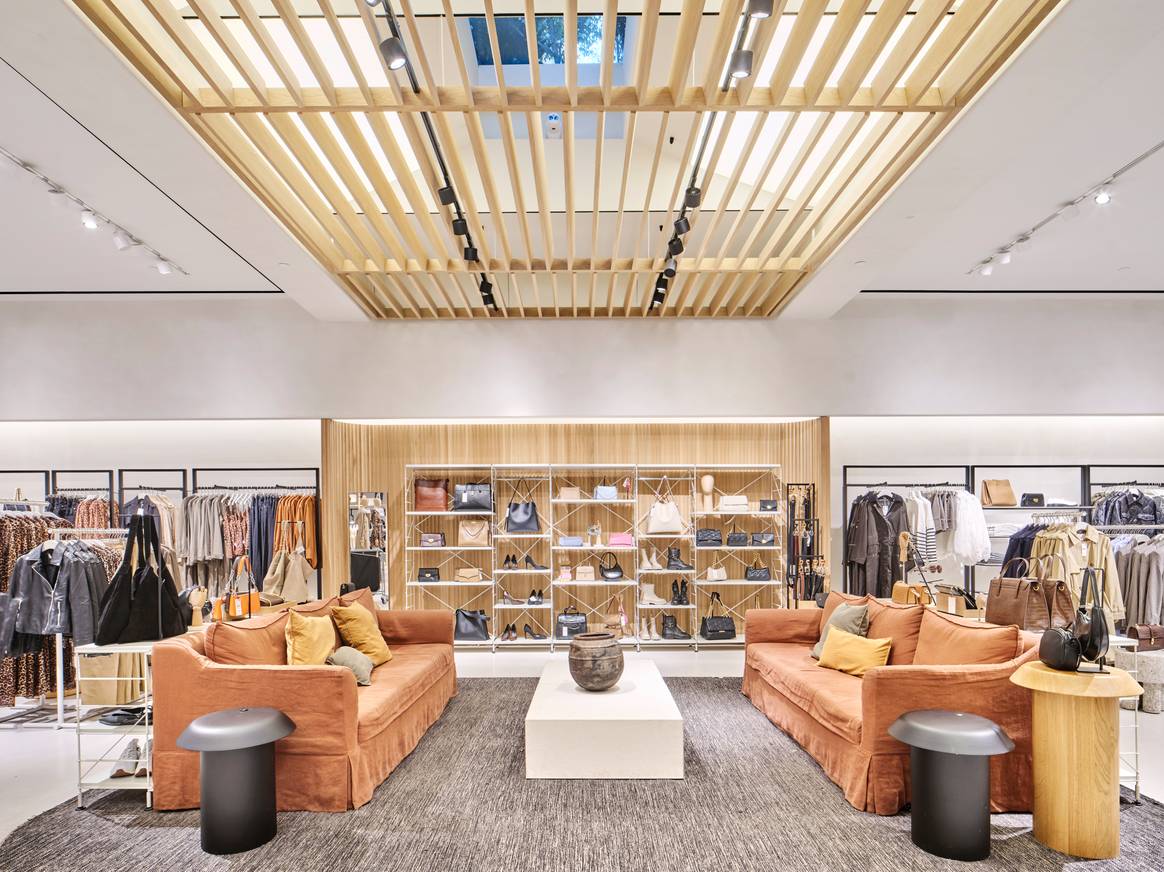Valencia – In an eminently online moment, in which we can scroll to buy a T-shirt or some sneakers without leaving the sofa, what is the role of traditional stores? To answer this question, FashionUnited looked to industry experts and retail professionals who could elaborate on how the evolving position of the ‘store’ has changed. Among these experts was Borja Vázquez, chairman of European clothing brand Scalpers, who said an interview: “[Stores] are another channel of contact with our customers within the company, they represent a significant weight in the turnover, and they will continue to do so.” We know that adapting to omnichannel is part of the game, as is having a strategic location, providing a differential value proposition and continuing to use the window display as a visual claim… But what happens inside?
Recent reopenings of Bershka across the brand’s home country of Spain and Europe as a whole have marked a turning point in the interior design of physical stores. In the brand’s renewed locations: a fresh design, based on the interaction of the younger public, where the shopping experience goes a step further. The products are presented in central islands, with a marked identity of their own, as if they were pieces of a museum. The textures, shapes and materials are intermingled for a futuristic finish and there are even activations or ‘instapoints’ to encourage this new generation of consumers to share their visit on social networks. Any mirror, play of lights and reflective surface invites a selfie. It is no longer just a space to buy, it is a playful and inspiring meeting place.
The studio that has developed the design of the Bershka store in the Galician shopping center of Marineda City is none other than OMA. The Dutch duo, formed by Ellen van Loon and Giulio Margheri, are behind other relevant projects such as the Fondazione Prada in Milan or the ‘Crafted World’ exhibition by Loewe in Shanghai, curated by its creative director Jonathan Anderson. “We can effectively say that these brands are increasingly adopting the codes of luxury. This trend is evident in the way they present their products, often in environments reminiscent of art galleries or museums,” Sergio Chillarón, interior designer at Huuun, the studio specialised in retail design and visual merchandising, told FashionUnited.
“Stores aimed at younger generations have evolved into instagrammable spaces that encourage content creation and provide memorable experiences. These experiences not only attract customers to stores, but also generate valuable organic advertising through networks,”
Key objectives: aspiration, branding and community building
Far from mere functionality, for Chillarón “the point of sale is becoming an aspirational space where aesthetics and experience play a crucial role”. The key? Being able to transmit the values of each brand in order to “create an active and committed community, which we also know as lifestyle”, says the expert. One more tool for, in some cases such as fast fashion or firms aimed at more mass audiences, “raising the perception of the brand and creating a stronger emotional connection with customers”, he concludes.

For Alberto Eltini, architect and founding partner of El Departamento, this is undoubtedly a trend that the mass market in general is following, but also digitally native firms. In his experience with firms such as Nude Project, Pompeii or PJ.Lobster, in which his philosophy usually stands out for creating that feeling of belonging, because these brands “did not have a history of physical spaces focused purely on the functional, as is the case with the Spanish or European retail landscape, start-ups do take those luxury brands as a reference”. This is because, according to Eltini, their main objective is “to build a brand, creating spaces that continue to extend beyond the logo and the garment itself”.

The balance between aesthetics and functionality
Regardless of trends, the point of sale will always be (or should be) an extension of the values and the universe of the brand itself and its audience. That is why it is normal for those companies aimed at generation Z to give greater importance to technology, immediacy and virality. As Sergio Chillarón maintains, “stores aimed at younger generations have evolved to become instagrammable spaces and even leisure spaces”. One of the objectives when designing any scenario is to encourage “creating content and providing memorable experiences. These experiences not only attract customers to stores, but also generate valuable organic advertising through networks”.
“Currently, both aspiration and functionality are key elements in the conception of points of sale. It is true that in space design, aesthetics and the search for an exceptional customer experience are very important, with the creation of welcoming environments that inspire people who enter, but it does so in balance with functionality,”
On the other hand, other brands, such as Mango, are looking for a more relaxed and welcoming space. For its creative store environment director, Andrea Siviero, aspiration cannot exist without functionality, both “are fundamental elements in the conception of points of sale”. The balance between “aesthetics and the search for an exceptional experience, with the creation of welcoming environments that inspire people who enter”, with “a logical arrangement of the different elements and accessibility to them”, adds Siviero.

In Mango’s new remodeling plan —the company currently has more than 2,700 points of sale in more than 115 markets worldwide, and [according to their strategic plan](https://fashionunited.uk/news/business/mango-hits-record-three-billion-euros-in-sales-plans-to-open-500-new-stores/2024031274546), they will open more than 500 additional ones by 2026—, there are essential elements such as “technology or sustainability”, as well as “reducing the environmental impact, improving energy efficiency and promoting a positive impact on the well-being of customers”. Their new generation of stores respond to the New Med concept, which aims to “reflect the spirit and freshness of the brand”, influenced by Mediterranean culture and style. “Our stores are dominated by warm tones and neutral color bases, as well as traditional, artisanal and sustainable materials,” says its creative store environment director.
At a time when any step towards the digital seems to shake the foundations of the physical, Alberto Eltini is optimistic: “Retail is experiencing a great moment.” After the uncertainty of the pandemic, “brands have realised the value of physical spaces. We like to go to places, meet other people, touch products… Society increasingly values coming across a well-designed and aspirational space, with a special atmosphere that goes beyond the transaction”, notes one half of El Departamento, the interior design and architecture studio based in Valencia.
This article originally appeared on FashionUnited.ES. Translation and edit by: Rachel Douglass.







